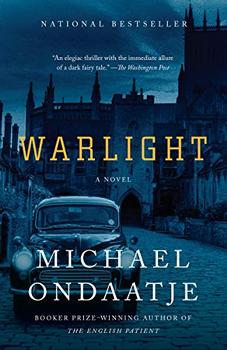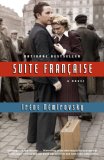Summary | Excerpt | Reading Guide | Discuss | Reviews | Beyond the book | Read-Alikes | Genres & Themes | Author Bio

In January 1945, in the waning months of World War II, a small group of people begin the longest journey of their lives: an attempt to cross the remnants of the Third Reich, from Warsaw to the Rhine if necessary, to reach the British and American lines. As they work their way west, they encounter a countryside ravaged by war.
In January 1945, in the waning months of World War II, a small group of people begin the longest journey of their lives: an attempt to cross the remnants of the Third Reich, from Warsaw to the Rhine if necessary, to reach the British and American lines.
Among the group is eighteen-year-old Anna Emmerich, the daughter of Prussian aristocrats. There is her lover, Callum Finella, a twenty-year-old Scottish prisoner of war who was brought from the stalag to her family’s farm as forced labor. And there is a twenty-six-year-old Wehrmacht corporal, who the pair know as Manfred–who is, in reality, Uri Singer, a Jew from Germany who managed to escape a train bound for Auschwitz.
As they work their way west, they encounter a countryside ravaged by war. Their flight will test both Anna’s and Callum’s love, as well as their friendship with Manfred–assuming any of them even survive.
Perhaps not since The English Patient has a novel so deftly captured both the power and poignancy of romance and the terror and tragedy of war. Skillfully portraying the flesh and blood of history, Chris Bohjalian has crafted a rich tapestry that puts a face on one of the twentieth century’s greatest tragedies–while creating, perhaps, a masterpiece that will haunt readers for generations.
Aside from the gripping story, fans of Chris Bohjalian will find this book quite a departure from his previous novels. However, there are familiar strains from his earlier works.
By telling the story from many viewpoints, using characters in varying life circumstances, (a POW, a Jew who escapes from the train to Auschwitz, a wealthy landowner, a young Jewish women in a death march) the story is not only richer, but symbolically it is a further reminder of the broad impact of this war on so many races, nationalities and countries.
As disturbing as it was to read at times, it left one feeling hopeful for the resiliency of the human race and how hope and goodness can not only endure but flourish after tremendous loss and suffering...continued
Full Review
 (976 words)
(976 words)
(Reviewed by Vy Armour).
The Central European region known as Prussia extended from the
south-eastern coast of the Baltic Sea to the
Masurian Lake District which is now divided between Poland, Russia, and
Lithuania. East Prussia was a province in the Eastern part of the region
which, along with the rest of Prussia, became part of the German Empire during
the unification of Germany in 1871. In 1875, almost three-quarters of the
region were ethnically German, the remainder were Polish and Lithuanian.
As the Russian troops marched across Europe in the waning months of World War
II, many ethnic Germans evacuated or were forcibly expelled from territories claimed by Germany during the early years of World War II, such as Czechoslovakia and Poland, and...

If you liked Skeletons at the Feast, try these:

by Michael Ondaatje
Published 2019
A mesmerizing new novel that tells a dramatic story set in the decade after World War II through the lives of a small group of unexpected characters and two teenagers whose lives are indelibly shaped by their unwitting involvement.

by Irene Nemirovsky
Published 2007
The first two stories of a masterwork once thought lost, written by a pre-WWII bestselling author who was deported to Auschwitz and died before her work could be completed.